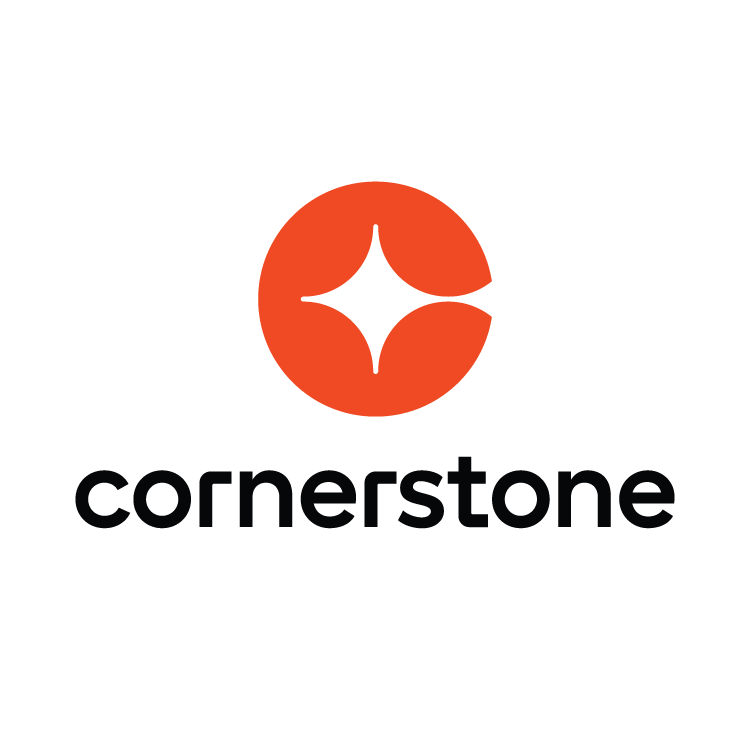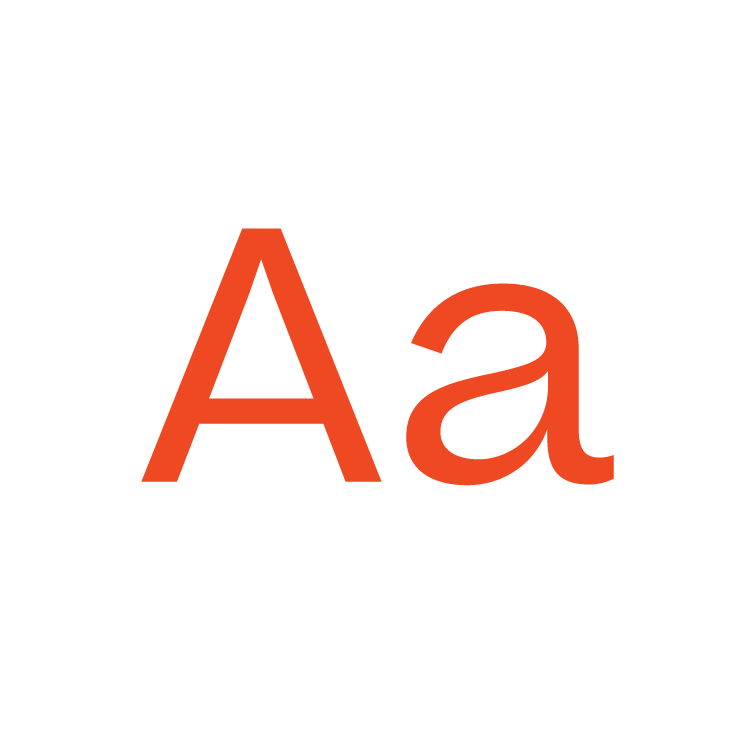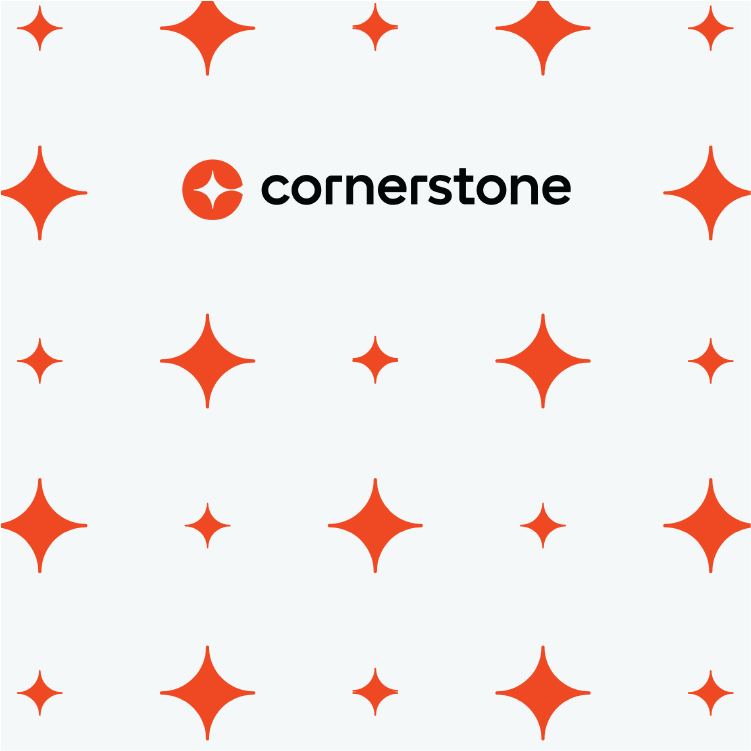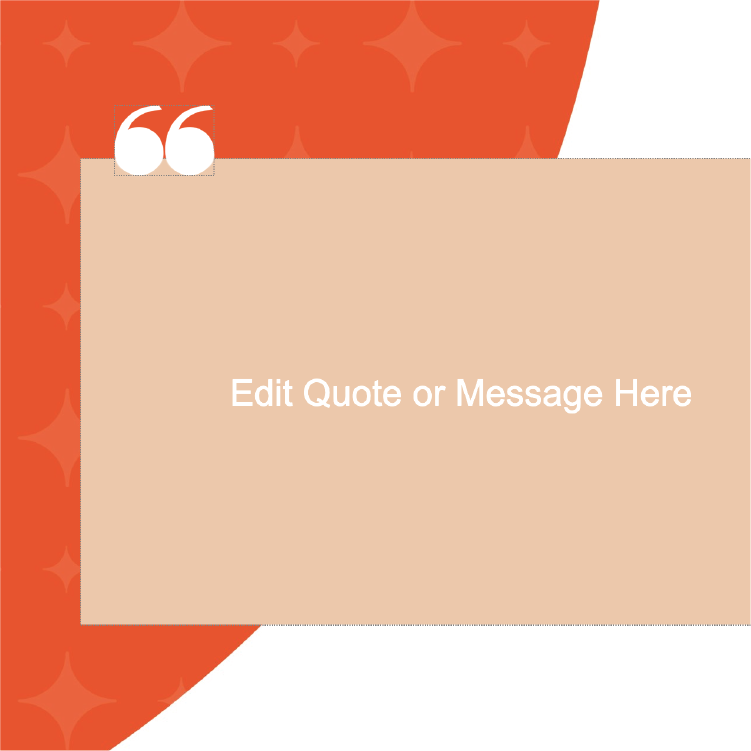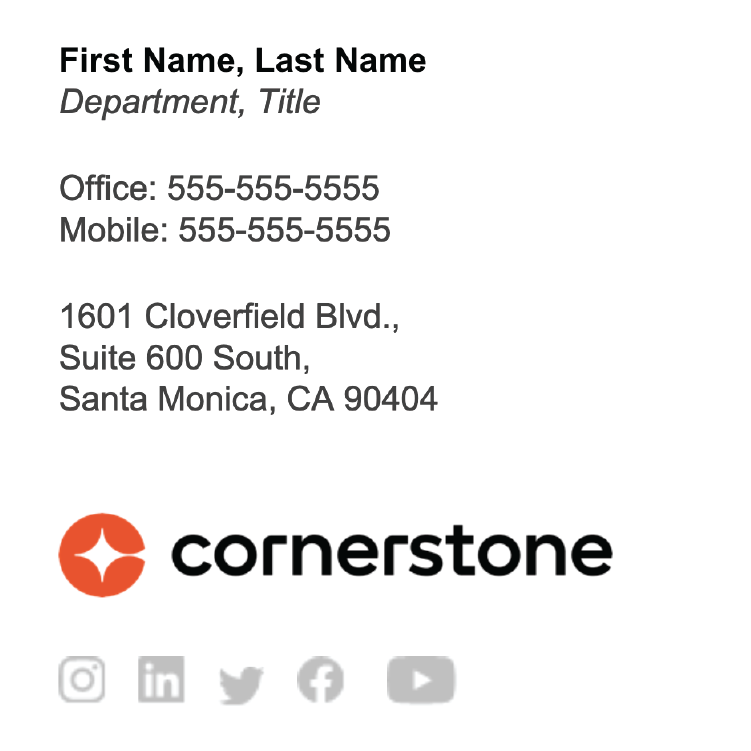Cornerstone empowers people to be their most extraordinary. And here, you’ll learn how to stay on-brand in everything you create.
Who we are
Vision
Bring organizations and their people together to achieve extraordinary things at work and be a force of good in the world.
Mission
We use technology and insight to inspire a work environment defined by individual growth and collective success.
Purpose
Empower people to be their most extraordinary — at work and in the world.
Positioning
We make work a place that works for everyone by unifying people, business and technology to create an environment that inspires growth, productivity, and success for all.
Value proposition
Cornerstone powers the future ready workforce with a system of work that works for everyone.
Voice attributes
Human
We’re approachable, warm, relaxed, and rooted in everyday life.
Direct
We’re focused, straightforward, and easy to follow.
Inspiring
We’re alive with a vibrant, refreshing, and infectious creative energy.
Understanding
We’re empathetic, respectful, and while we’re proud of our products, we let the success of our customers shine through.
Dependable
We’re committed to our word and earnestly do what we say we’ll do.
Tagline

Logo
Horizontal

Vertical
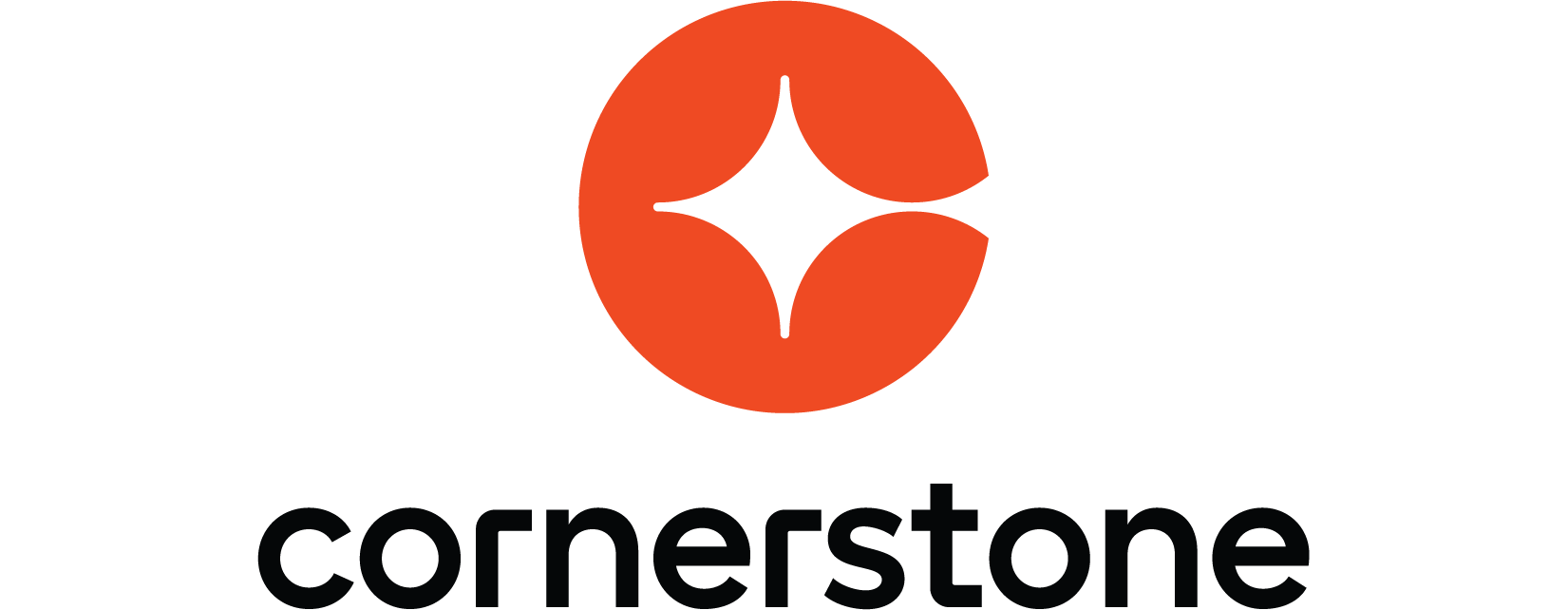
Symbol

Do you see it?
The Cornerstone logo has a star at its center, representing Cornerstone as the “True North” of talent — guiding organizations forward.
Typefaces
Beatrice
Use this typeface everywhere it’s available.
AaBbCcDd 1234567890
AaBbCcDd 1234567890
AaBbCcDd 1234567890
AaBbCcDd 1234567890
AaBbCcDd 1234567890
Arial
Use this websafe typeface whenever Beatrice isn’t available.
AaBbCcDd 1234567890
AaBbCcDd 1234567890
Noto Sans
Use this typeface for APAC languages.
Japanese
将来に備えた労働力を強化する
Chinese (Traditional)
為面向未來的勞動力提供動力
Chinese (Simplified)
为面向未来的劳动力提供动力
Korean
미래를 준비하는 인력에 힘을 실어
Vietnamese
cung cấp năng lượng cho lực lượng lao động sẵn sàng cho tương lai
Colors
Primary
This is our main color. Use it in everything you make.
Neutral
These neutral colors help elevate Corange and should be used regularly and generously.
Secondary
These secondary colors support Corange and the neutral colors, adding some variety and distinction.
Tertiary
These tertiary colors are here in case of emergencies, color emergencies — the worst kind.
Usage ratios
How often you should be using each of our colors. Now with precentages.
60%

25%

10%

5%

Iconography
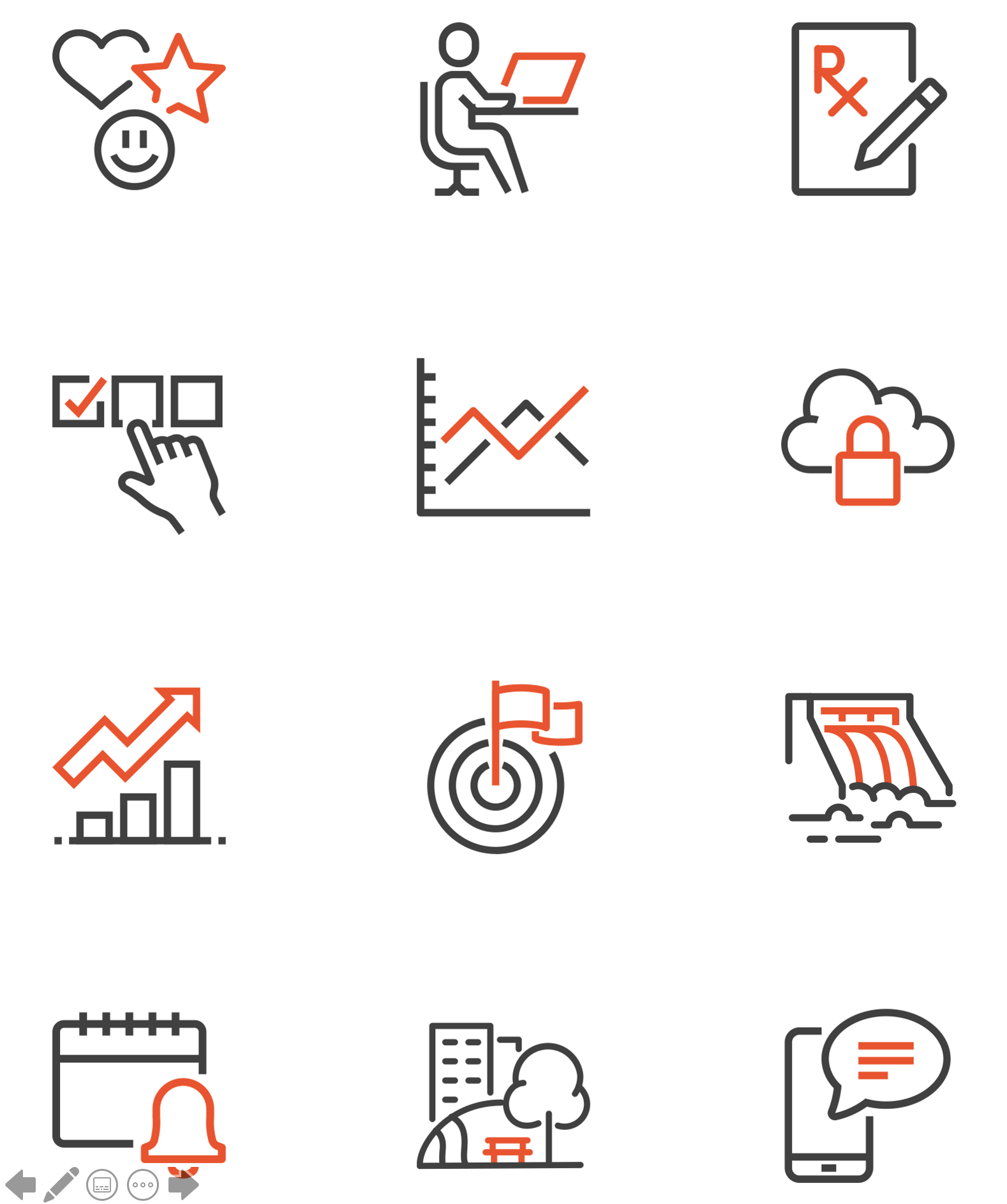
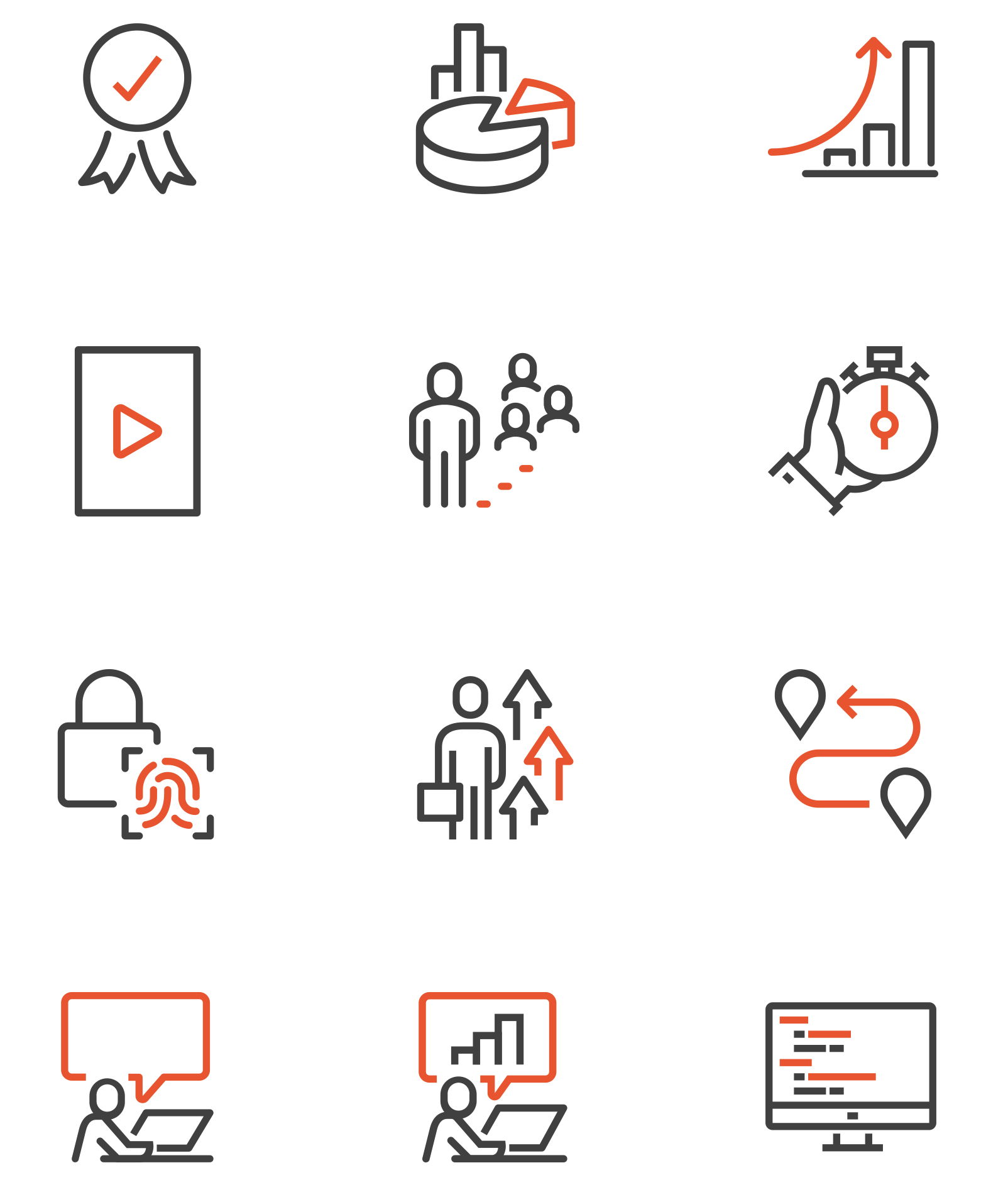
Photography

Studio portraits
Simple office backgrounds. Minimal props. Neutral, unobtrusive background colors and textures. An unstaged feeling.

Environmental portraits
Industry/job-specific locations. Uncluttered backgrounds with good “natural” light. Focus on the subject.

Props and devices
Slightly worn in and used. Naturally held and interacted with. Casual, loose arrangements.

Framing and cropping
Subjects or actions are in the left or right half of the frame and a point of interest at the center with no competing points.

Lighting and color
Strongly directional. Contoured with natural shadows. Uneven, calm, without a lot of contrast. Deep, muted colors.
Writing guide
This is just a snippet
These guidelines are only a tiny percentage of our writing rules. If you write a lot for Cornerstone or just love past participles, check out the complete guide.
Voice checklist
After you write anything, ask yourself these five questions to ensure you’re staying on-brand.
Is it conversational?
If you wouldn’t say it out loud, don’t write it. But don’t write exactly how you speak — be more succinct. Aim for casual, grounded, and occasionally playful, but never at the expense of clarity.
Is it straightforward?
Replace jargon with words that optimally synergize that people actually understand. Respect your readers’ time. Say what you mean in as few words as possible.
Is it actionable?
Like our customers, Cornerstone is alive with creative energy, and that spirit infuses how we communicate. Always write with your focus on showing, not just telling, how we can help connect customer talent strategies to successful outcomes.
Is it customer-first?
Our customers have big challenges and even bigger goals. We write with empathy, knowing that we’re not the most important thing to them, while they’re the most important thing to us.
Is it authentic?
We write with an earnest commitment to upholding our 20-plus years of industry-leading professional standards. Our customers trust us to consistently provide a reliable customer-focused experience.
10 writing rules
01
99% of the time we follow AP Style. Some of those exceptions are even on this list.
02
No matter what you call it, we use the Oxford, Serial, or Harvard comma. It’s the last comma in a list before the conjunction.
03
Add spaces before and after em dashes (—) but not hyphens (-). For en dashes (–), add spaces except when it’s indicating a range, then no spaces.
04
Headlines are sentence case but don’t end in periods unless they’re more than one sentence. Subheadlines are also sentence case but do end in periods. And CTA buttons are title case, no periods.
05
Write in the active voice (like this sentence). The passive voice (like this sentence) is to be avoided by you.
06
Establish what an acronym or initialism stands for before your use it.
07
Take a customer-first approach. Customers don’t care what we did, only how it makes their lives better. So tell them.
08
Cornerstone OnDemand vs. Cornerstone vs. CSOD – Our full name is Cornerstone OnDemand. But we go by Cornerstone. The only time you’ll need to use our full name is the first time you mention us in long-form documents like press releases and legal. Every other time, just call us Cornerstone. And for our initials, only use CSOD when you’re referring to a webpage or one of our email addresses.
09
Cornerstars – The people who work at Cornerstone
Customers – The people who buy Cornerstone products
Organizations – We default to this instead of “business” or “company” because many customers identify as neither
People – We default to this instead of using “employees” repeatedly and because it’s more human
10
Our first language is US English, but we’re a global brand. If something you’re writing is getting translated or localized, try to avoid using double negatives, slang, and idioms because they don’t translate well.
















